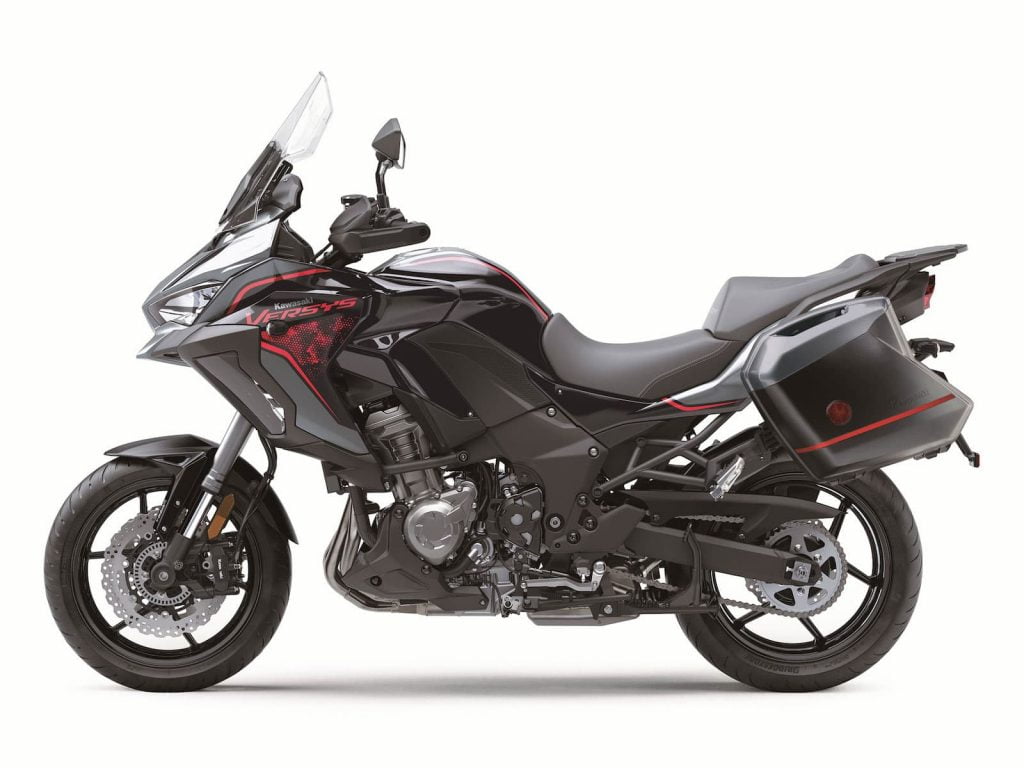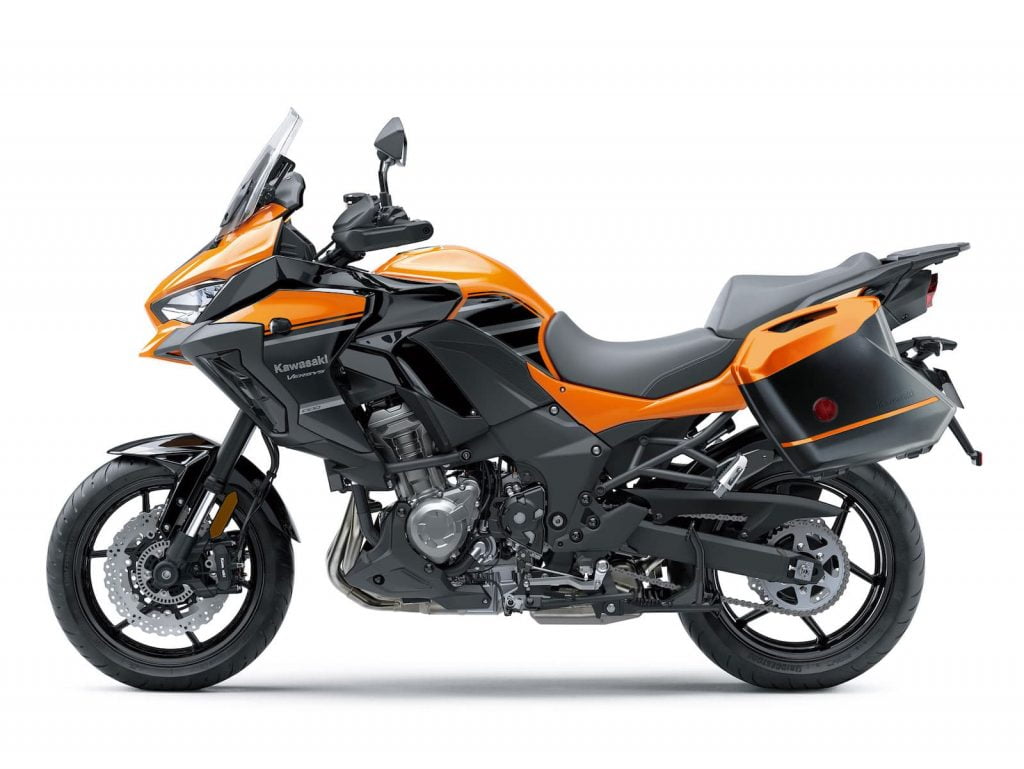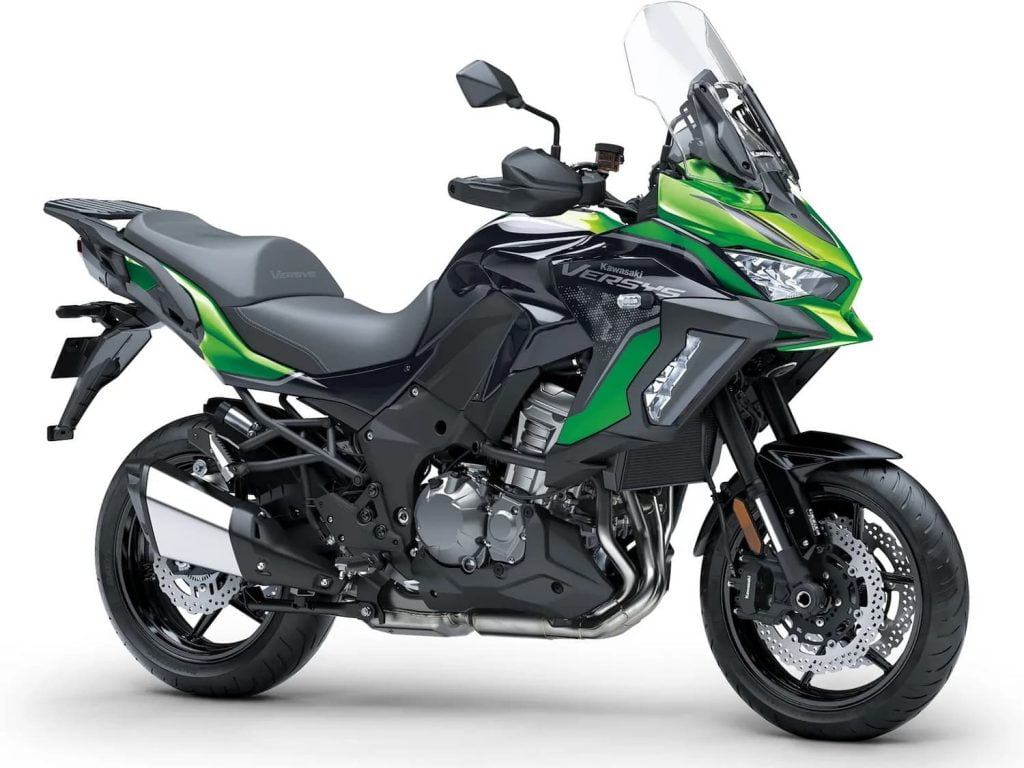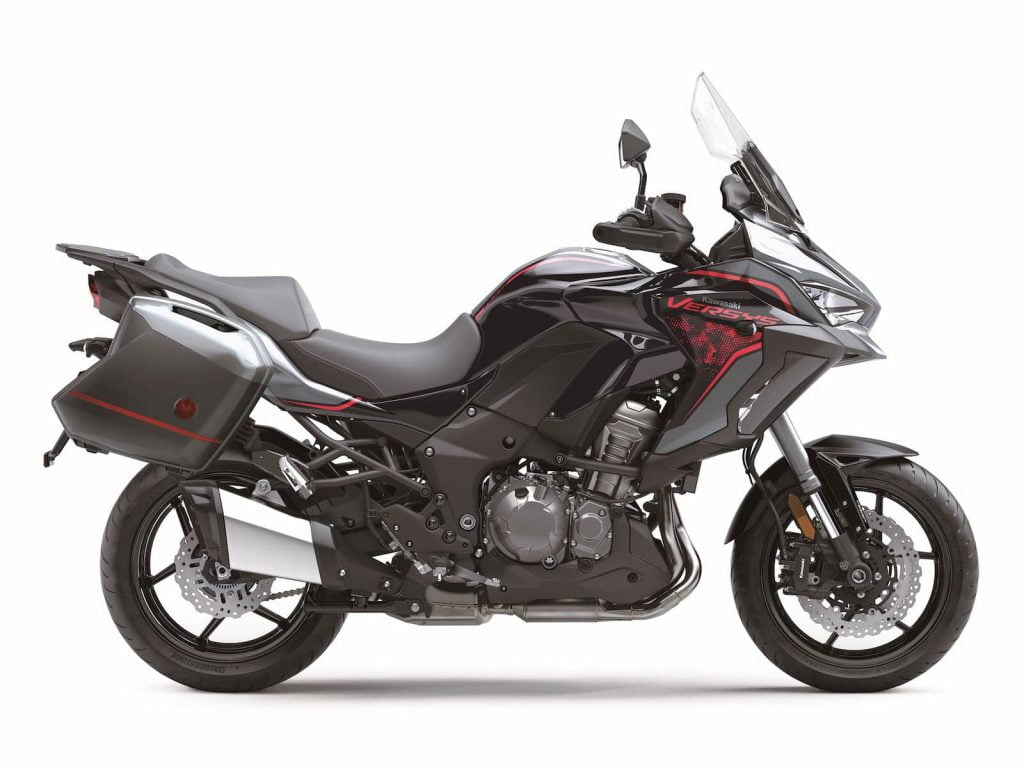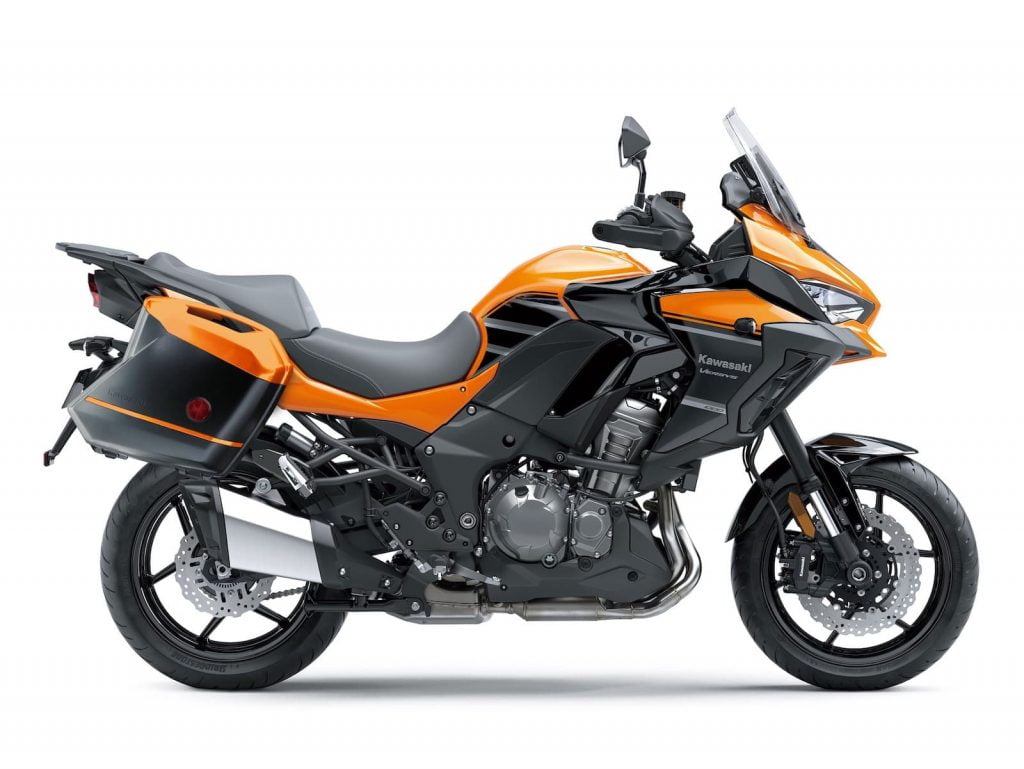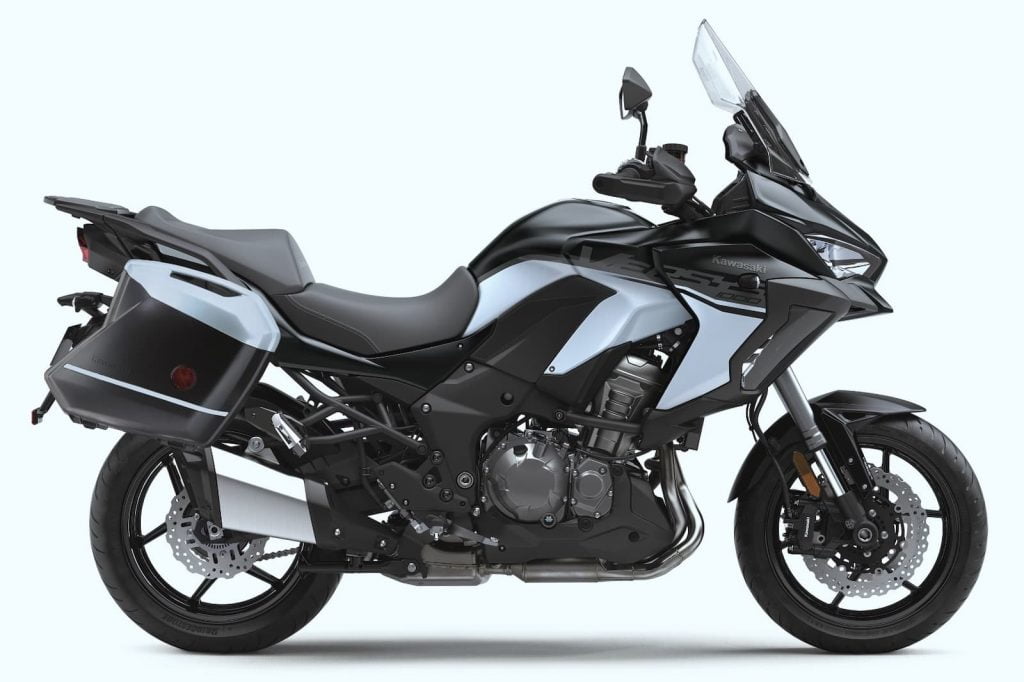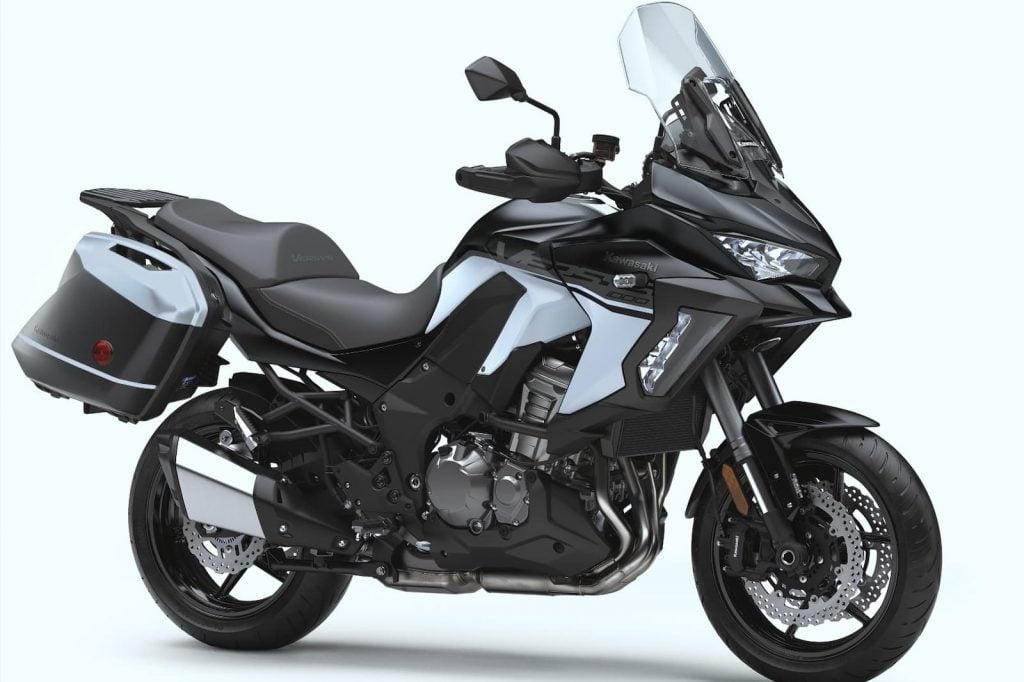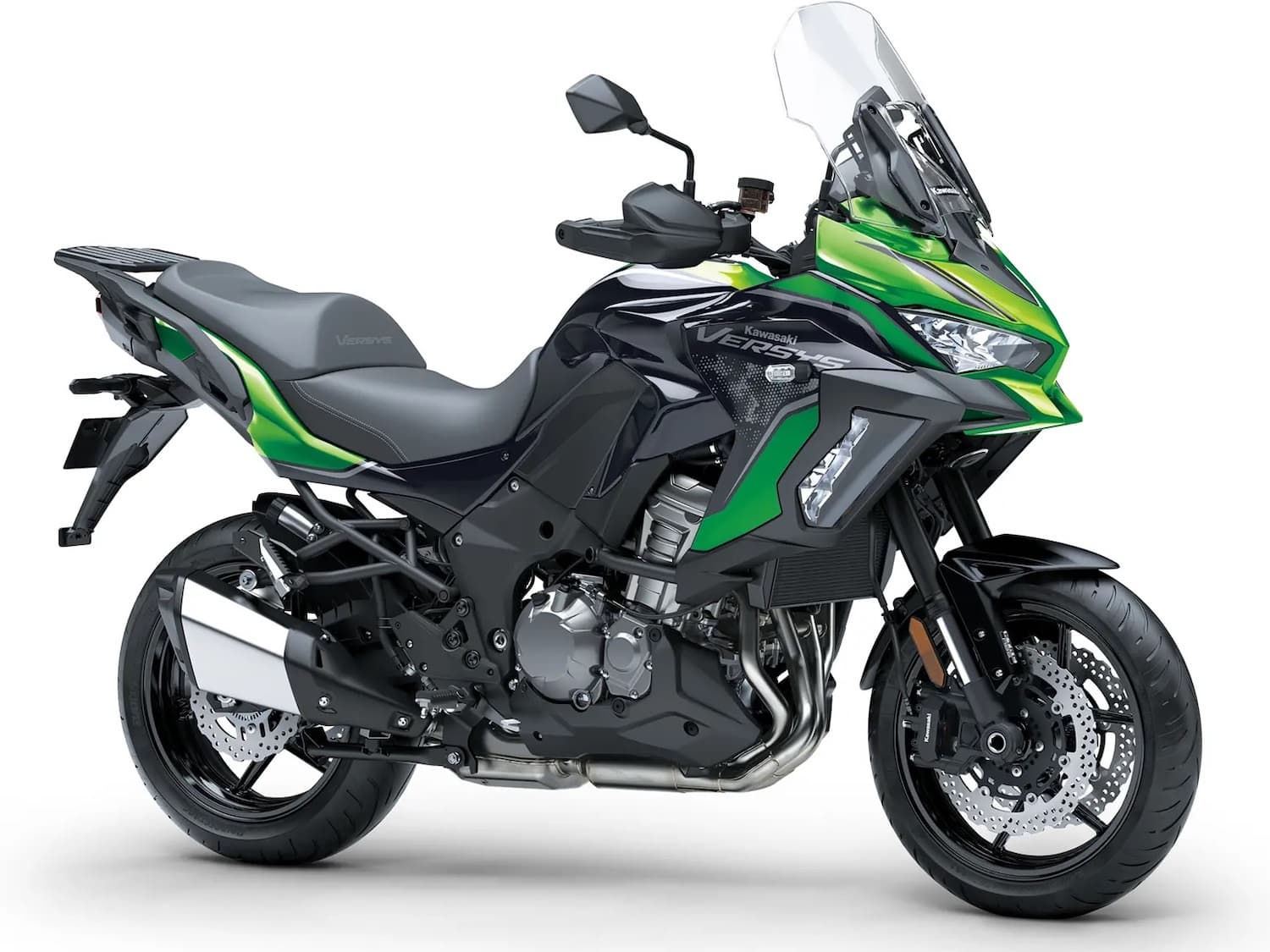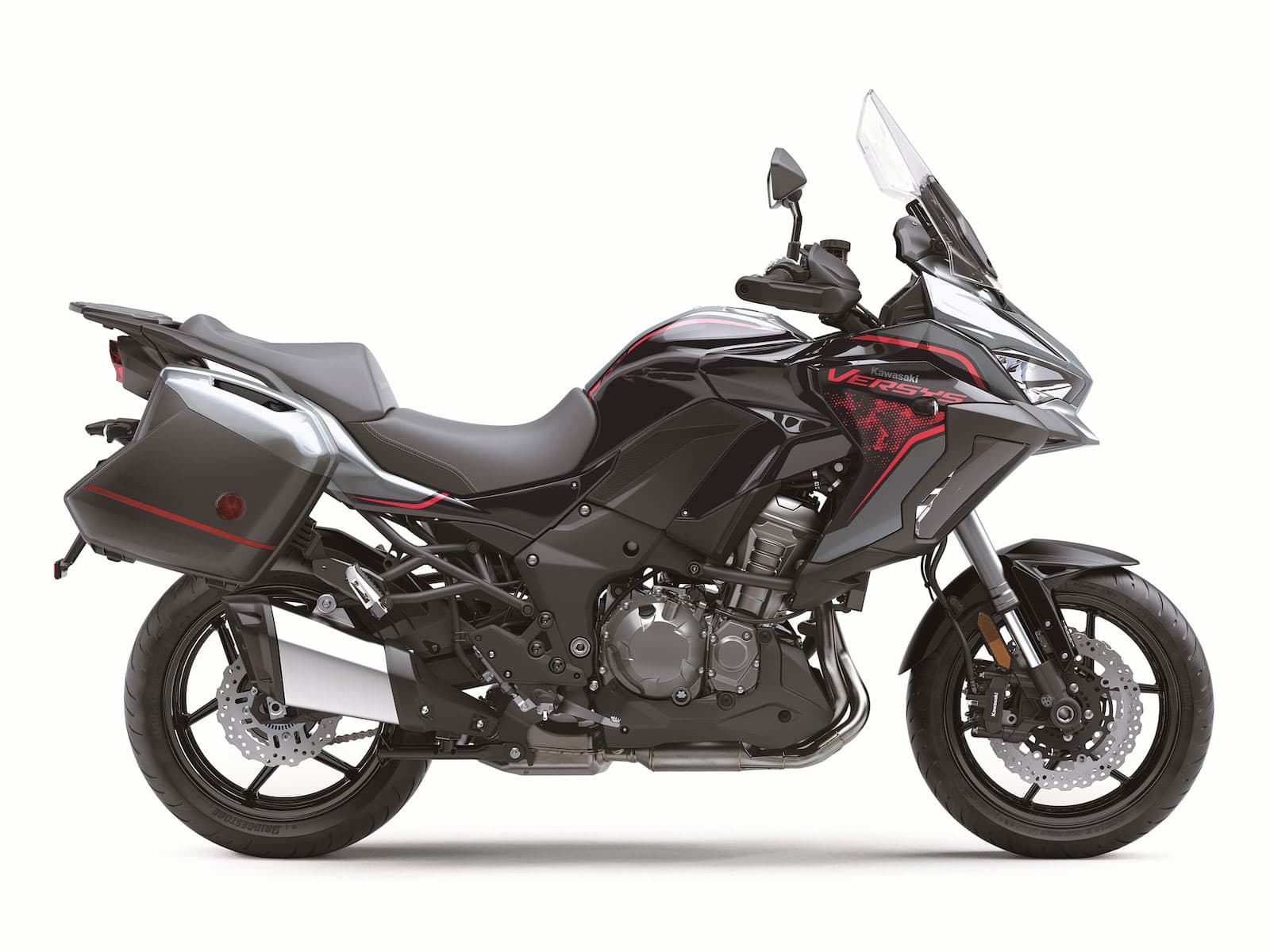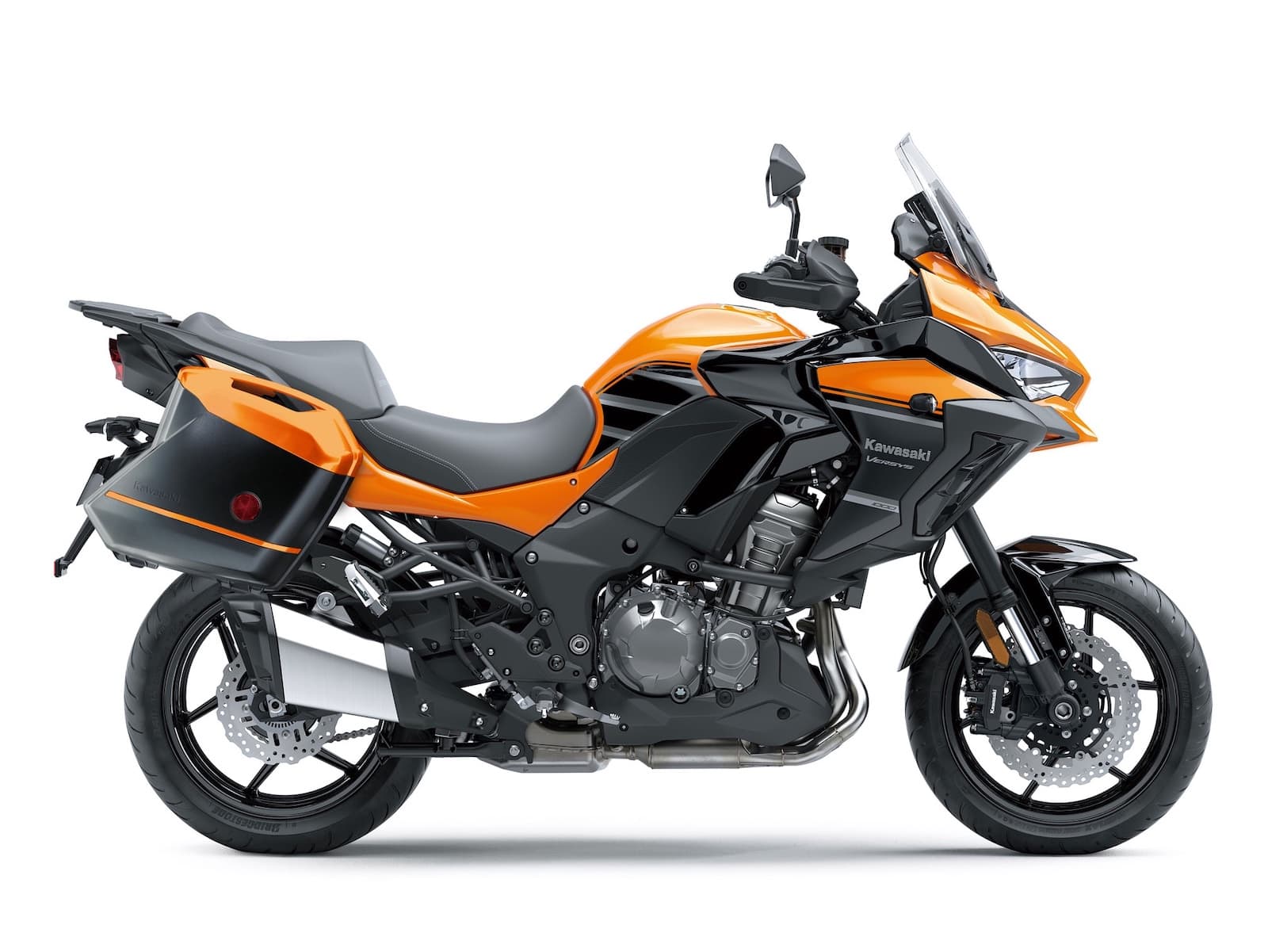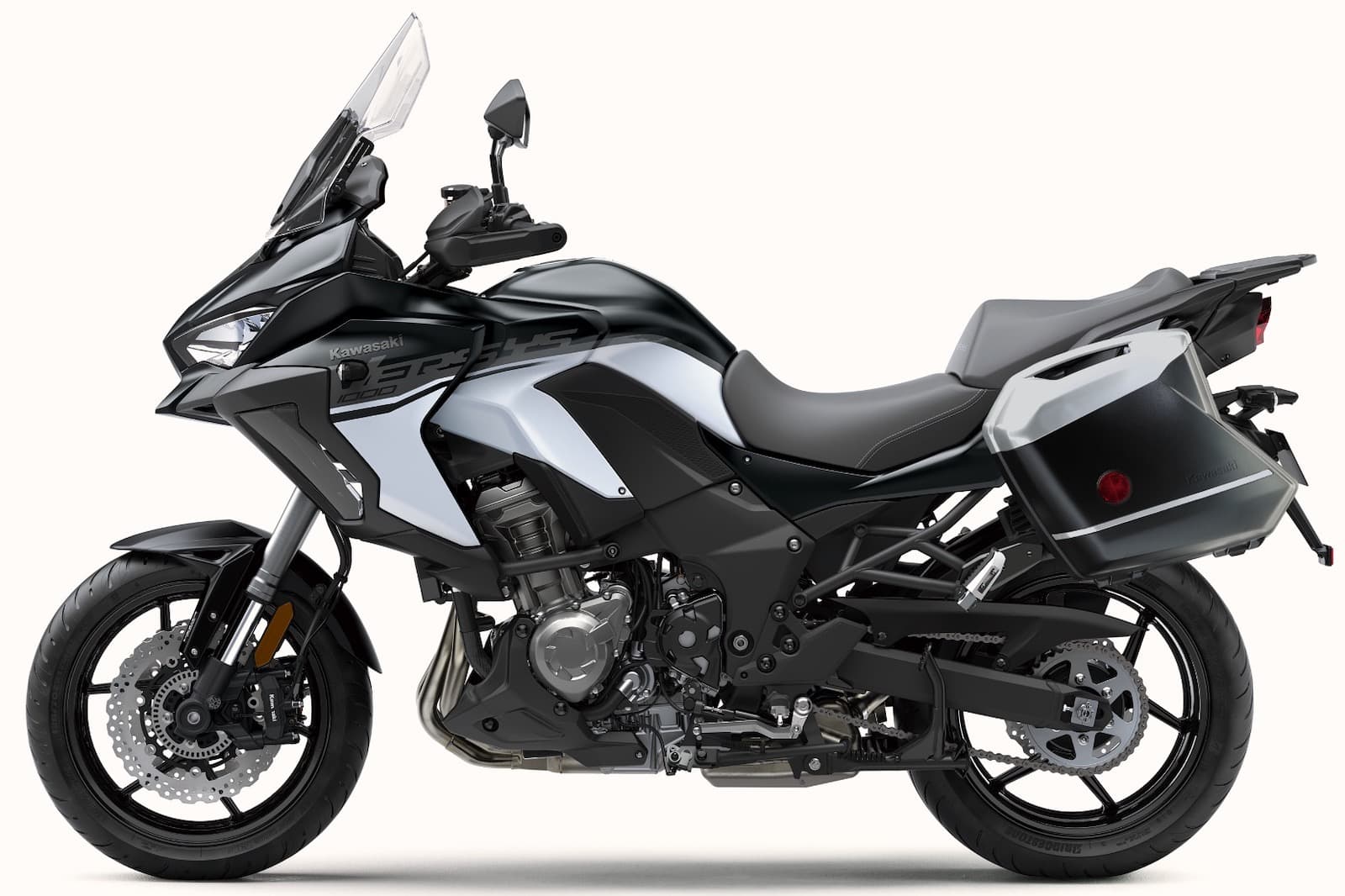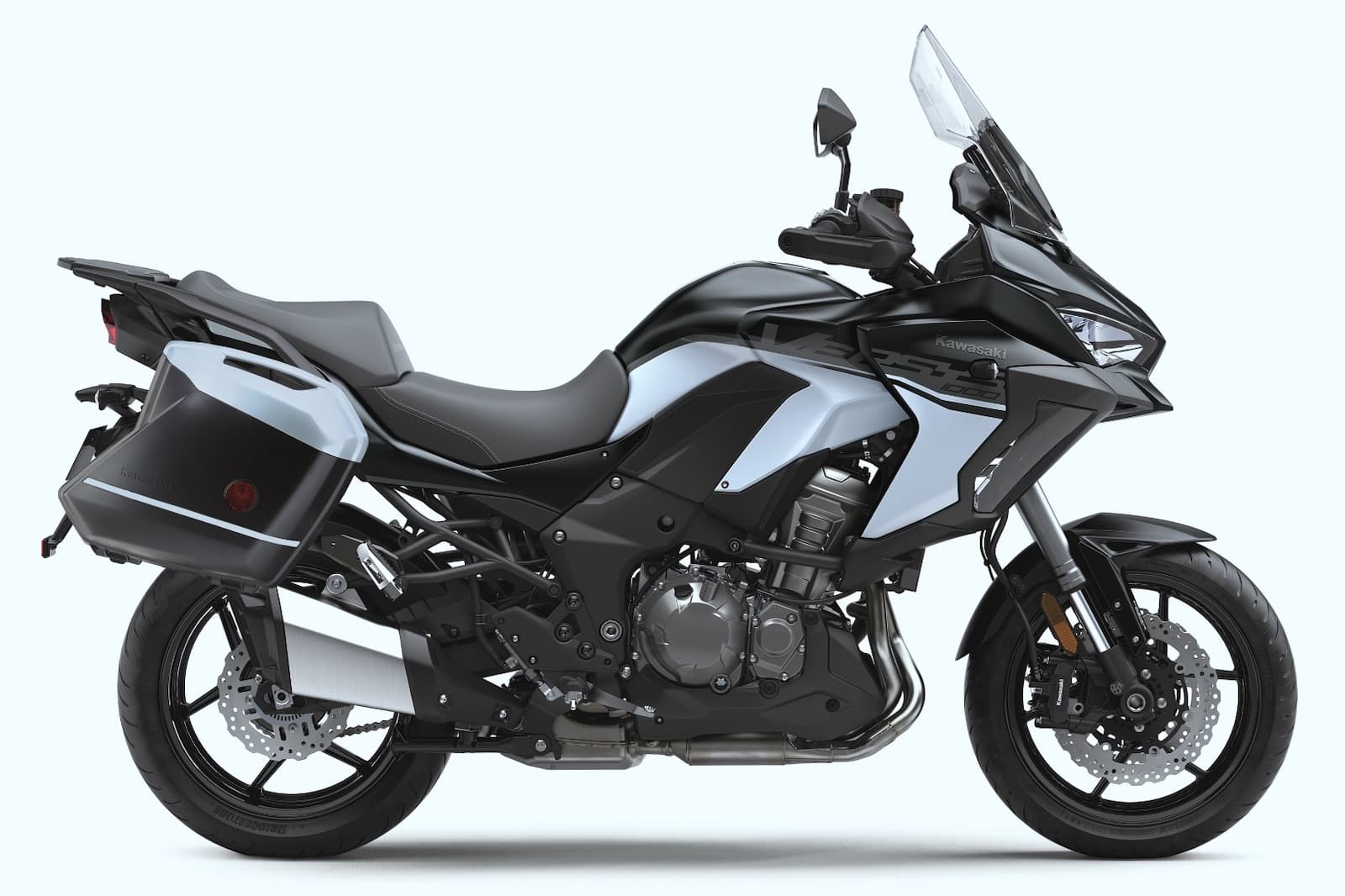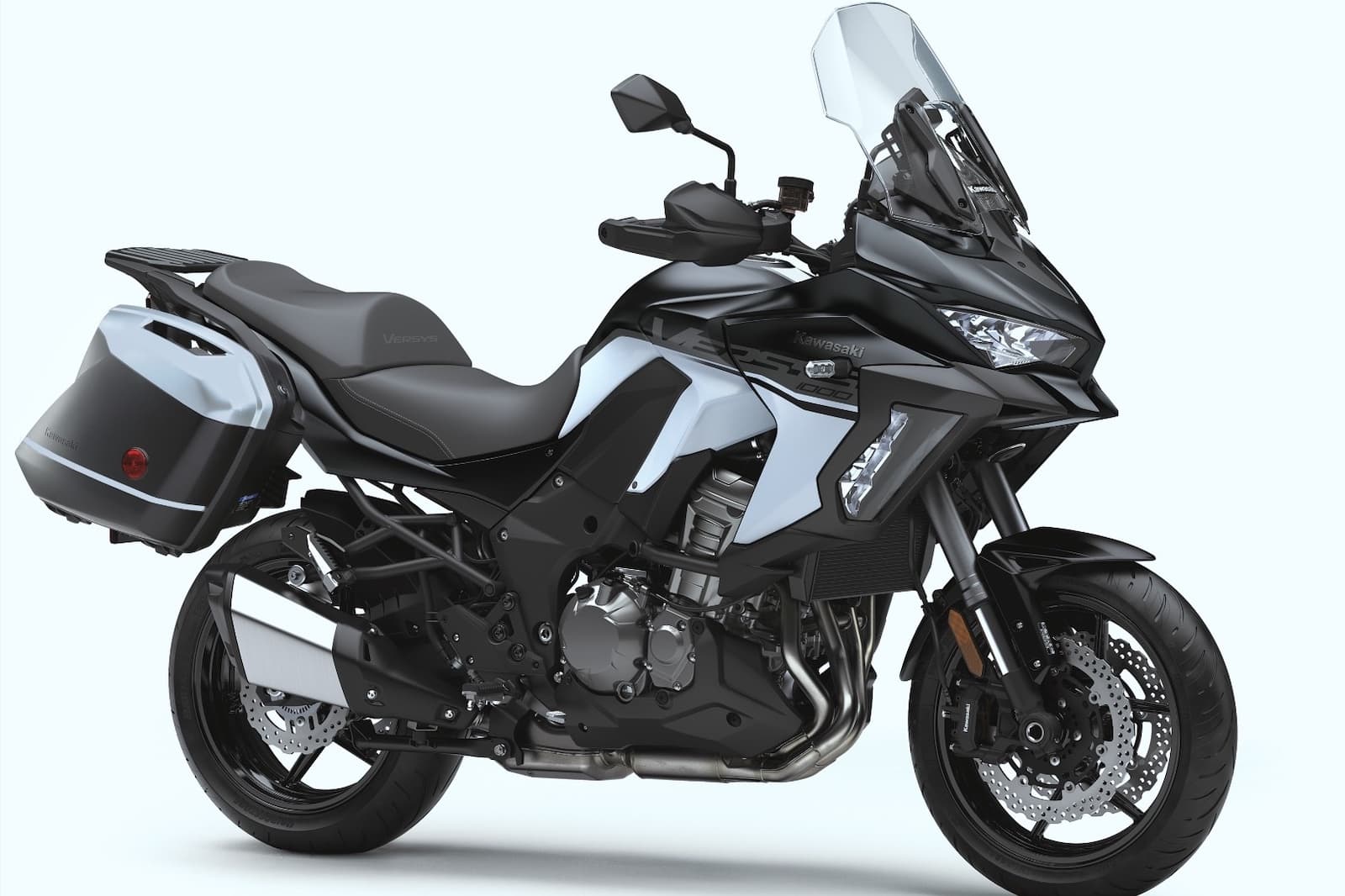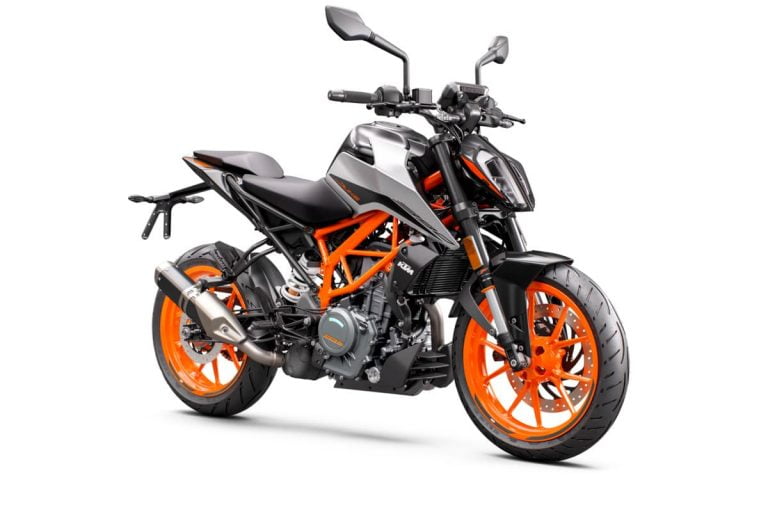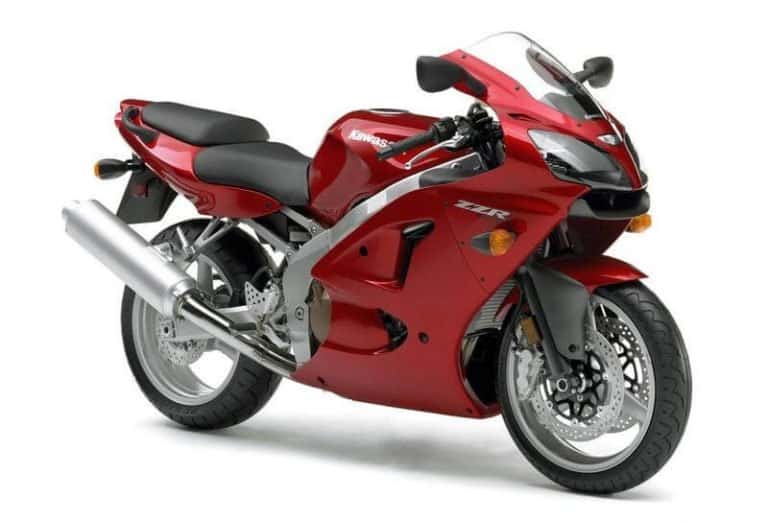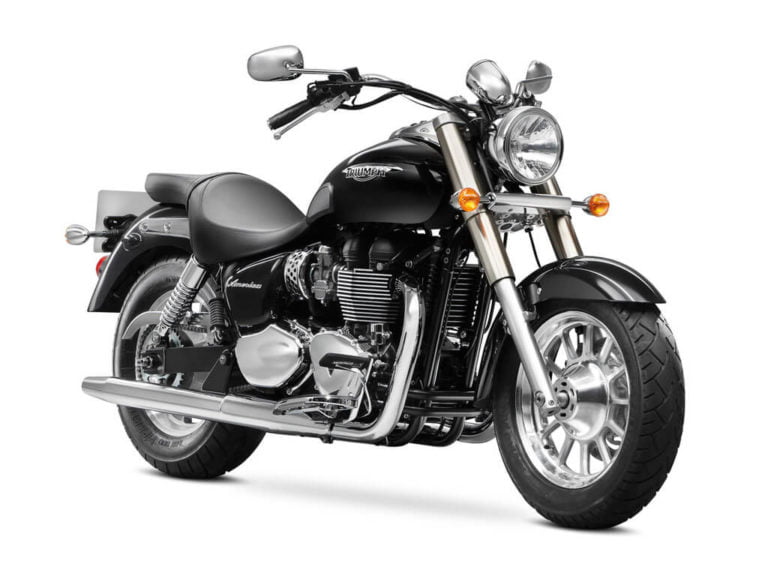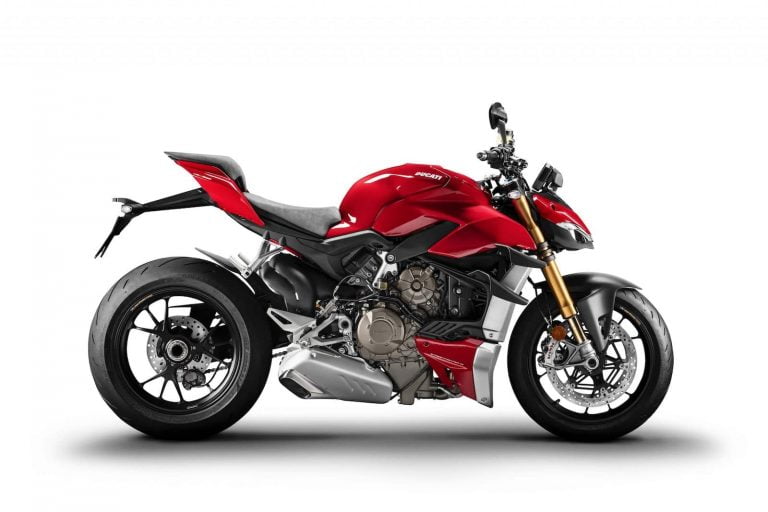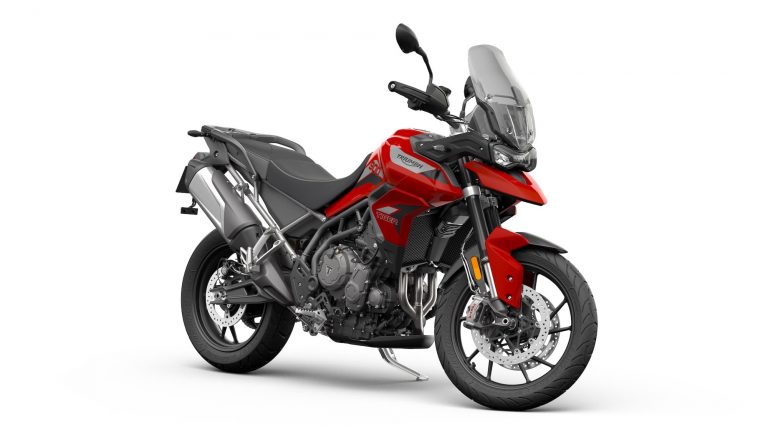Kawasaki Versys 1000 Gen 3 (2019+) Maintenance Schedule and Service Intervals
This is the maintenance schedule and service intervals for the Kawasaki Versys 1000 made since 2019. The 2019 model got a six-axis IMU and cruise control.
The Versys 1000 has been through a number of iterations:
- Gen 1 Versys 1000 (2012-2014): Released late in 2011 for the 2012 model year, using the 1,043 engine from the Ninja 1000/Z1000 but in an upright, sport/adventure touring chassis.
- Gen 2 Versys 1000 (2015-2018): Upgraded front suspension and braking, and significant style improvements.
- Gen 3 Versys 1000 (2019+): Six-axis IMU, cruise control, and active electronic suspension (SE and LT models), and more style improvements.
All generations of the Versys 1000 since launch have been based on the same 1,043cc inline-four cylinder DOHC liquid-cooled engine inherited from the Z1000 (and originally from a ZX-10R). It’s a long-stroke engine that’s torque heavy. Compared to the Ninja 1000, the Versys 1000 has always been heavier and down on peak power, but with more torque available in the mid-range.
This site has links for things like oil and spark plugs from which we earn a commission (which unfortunately nobody can save, not even us). If you appreciate this work, then please use those links. Thanks!
Versys 1000 Service Intervals
Like other iterations of the Versys 1000, the 2019+ Versys 1000 has 7600 mile / 12000 km orannual service intervals. At every service, you change the oil and filter, and do a host of checks (see the list below).
Kawasaki Versys 1000 (2019+) Maintenance Schedule
Below is the maintenance schedule for the 2019+ Kawasaki Versys 1000.
It’s just as it was in the manual (see the screenshots at the bottom) but with some modifications to fit the screen and make it easier to read.
Notes on the maintenance schedule
- The original schedule specifically noted emissions-related items for regulatory reasons, which we omitting here to save space and because it’s not relevant to most maintenance.
- Valve service intervals are ever 24,000 km (15K mi).
| mi x 1000 | 0.6 | 7.6 | 15.2 | 22.8 | 30.4 | |
|---|---|---|---|---|---|---|
| km x 1000 | 1 | 12 | 24 | 36 | 48 | Every |
| Inspection checklist (see below) — Perform all | ✓ | ✓ | ✓ | ✓ | ✓ | Year |
| Engine oil — Replace | ✓ | ✓ | ✓ | ✓ | ✓ | |
| Oil filter — Replace | ✓ | ✓ | ✓ | ✓ | ✓ | |
| Air cleaner element — Replace | ✓ | ✓ | ✓ | ✓ | ||
| Spark plugs — Replace | ✓ | ✓ | ✓ | ✓ | ||
| Valve clearances — Inspect / Adjust | ✓ | ✓ | ||||
| Fuel filter — Replace | ✓ | ✓ | ||||
| Coolant, water hose, and O-ring — Replace all | ✓ | 3 years | ||||
| Drive chain — Check lubrication condition | 600 km (400 miles) | |||||
| Drive chain — Check / adjust slack | 1000 km (600 miles) | |||||
| Brake fluid (front and rear) — Replace (Castrol DOT 4) | ✓ | ✓ | 2 years | |||
| Brake hoses — Replace | 4 years | |||||
| Rubber parts of brake master cylinder and caliper — Replace | ✓ | 4 years | ||||
| Steering stem bearings — Lubricate | ✓ | ✓ | 2 years | |||
| Fuel hoses — Replace | 5 years | |||||
| Evaporative emission control system — Inspect | ✓ | ✓ |
Inspection checklist
Here’s the inspection checklist for the Versys 1000.
| Versys 1000 Inspection Checklist |
|---|
| Idle speed — Check |
| Throttle control system — Check for free play and smooth return |
| Electrical system — Inspect |
| Air suction system — Inspect |
| Engine vacuum synchronization — Check / Adjust |
| Drive chain guide — Check wear |
| Drive chain — Inspect for wear |
| Fuel system — Check for leaks |
| Coolant level — Inspect |
| Cooling system — Inspect |
| Clutch operation (play, engagement, disengagement) — Inspect |
| Tire air pressure — Inspect |
| Wheels and tires — Inspect |
| Wheel bearing — Inspect for damage |
| Brake pad wear — Inspect |
| Brake fluid level — Inspect |
| Brake system — Inspect |
| Brake operation (effectiveness, play, no drag) |
| Brake light switch operation — Inspect |
| Suspension system (front and rear) — Inspect for smooth operation, leaks |
| Steering play — Inspect / Adjust |
| Chassis parts |
| Condition of bolts, nuts, and fasteners — Inspect |
Daily checks
The manual also recommends the following daily checks on the Kawasaki Versys 1000:
| Part | Daily chec |
|---|---|
| Fuel | * Adequate supply in tank, no leaks |
| Engine oil | * Oil level between level lines |
| Tyres | * Air pressure (when cold), install the air valve cap * Tyre wear |
| Drive chain | * Slack: Every 1000 km (600 mile) * Lubricate: Every 600 km (400 mile) |
| Bolts, nuts, and fasteners | * Check for loose and/or missing bolts, nuts, and fasteners |
| Steering | * Action smooth but not loose from lock to lock * No binding of control cables |
| Brakes | * Brake pad wear * Brake fluid level * No brake fluid leakage |
| Throttle | * Throttle grip free play |
| Clutch | * Clutch lever free play * No clutch fluid leakage |
| Coolant | * No coolant leakage * Coolant level between level lines (when engine is cold) |
| Electrical equipment | * All lights (head, city, brake/tail, turn signal, license plate, warning/indicator) and horn work |
| Engine stop switch | * Stops engine |
| Side stand | * Return to its fully up position by spring tension * Return spring not weak or not damaged |
| Rear view mirrors | * Rear view sight |
Kawasaki Versys 1000 (2019+) Tyre Sizes and Pressures
Below are the tyre sizes and pressures for the Kawasaki Versys 1000 (2019+) from the manual.
The original Versys 1000 (2019+) shipped with Bridgestone Battlax sport touring tyres.
| Wheel | Tyre size | Tyre pressure (cold) |
|---|---|---|
| Front | 120/70ZR17 M/C 58W | 250 kPa/2.5 bar/36 psi |
| Rear | 180/55ZR17 M/C (73W) | 290 kPa/2.9bar/42 psi |
About the 2019+ Gen 3 Kawasaki Versys 1000
If the Gen 2 Kawasaki Versys 1000 update was a huge one in terms of style and handling, then the Gen 3 update was huge again… but this time in terms of technology.
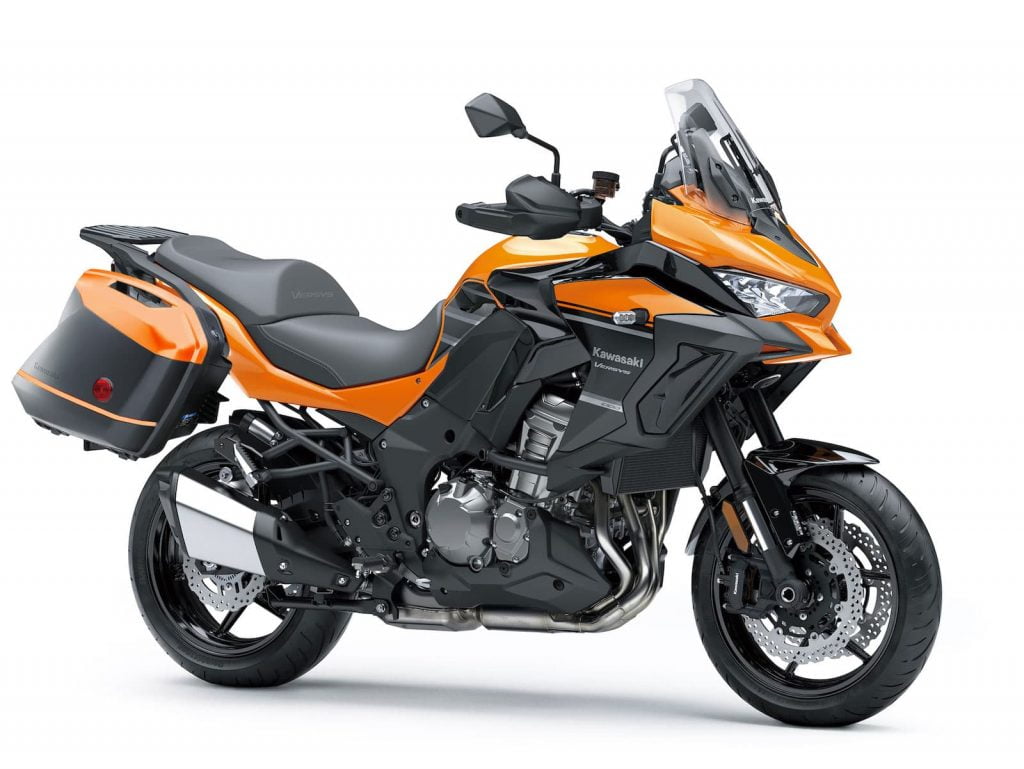
The 2019+ Kawasaki Versys 1000 (the Gen 3) kept the same engine block and fundamental design principle at its core.
It’s still powered by a DOHC inline-four liquid-cooled engine, and still makes about the same amount of peak power — 90 kW or 120 hp. The engine comes from the Ninja 1000/Z1000, albeit in less frantic, and more mature tune, suitable for the long-haul rather than … shorter long-hauls (the Ninja 1000 is still a very comfortable motorcycle, particularly the latest Kawasaki Ninja 1000SX with cornering ABS and cruise control).
And the Kawasaki Versys 1000 is still the same class of bike — a sport/adventure tourer, designed for long freeway rides in maximum comfort. Your limbs are all in a comfortable position, you get a full cocoon of air (unless you’re quite tall), and you get ever rider aid you might need to take you a long way away.
The Versys 1000 hasn’t succumbed to peer pressure to become a dual-sport bike or one with any off-road pretensions. So it doesn’t come with knobby tire options or spoked rims, like the Africa Twin. The Kawasaki Versys 1000 is unabashedly a road bike.
That said, you can definitely do some mild off-roading with the Versys 1K. It has an upright seating position and good ground clearance, so you could roughly take the Versys 1K anywhere you could take a family four-wheel-drive SUV.
The Kawasaki Versys 1000 inherited the best features of the older 2015-2018 model — the engine, general styling, and competent assembly.
But the Versys 1000 got a lot of updates in 2019 which made it an even more compelling proposition over earlier generations. Here’s what it got in a nutshell:
- Active electronic suspension. This is dynamic suspension that samples suspension response 100 times a second and adjusts the suspension parameters for maximum comfort. It translates into a bike that always feels poised and is very easy to do a lot with — even throw into corners. Within minutes of riding one you can have it leaning a lot further than you would think would be reasonably possible.
- A full six-axis IMU, throttle by wire, and cruise control. Cruise control makes long distance trips so easy. An IMU means peace of mind and very easy riding. One nice feature of the IMU is that it displays your lean angle live (and also records it for every trip).
- Phone connectivity. Like many recent Kawasaki bikes, the latest Versys 1000 lets you download data via Kawasaki’s Rideology app. You can even use the app to customise ride modes and bike settings while away from the bike.
- Bi-directional quickshifter. You thought just sportbikes got these? Nope — clutch-less up-and-down shifts are now the domain of the sports adventure tourer. The clutch action is very light, though, so you may not use it often (particularly if you switch bikes a lot).
- Self-healing paint — yes, you read it right. It heals if you crash it! Not really, but it does heal itself from minor abrasions and scratches, keeping the surface looking pristine many years ahead (in theory).
Riding the Kawasaki Versys 1000 is of course different to riding a sportbike, even if the engine was (in some form) at one point in a ZX-10R and it comes equipped with a quickshifter. The engine is responsive, but doesn’t rev to the moon — it’s more about mid-range torque, much like driving an SUV.
One of the wonderful bits about giving the 2019+ Kawasaki Versys 1000 full throttle is the induction roar. Kawasaki really works on the acoustics of its induction system in its late-model bikes. While exhaust is muted to comply with emissions regulations and the wishes of your neighbours, you do get to hear the engine sucking down huge volumes of air as you pin the throttle in the first couple of gears.
The 2019+ Kawasaki Versys 1000 came in a few different guises. The maintenance schedule for every version is the same, but the factory features/options are different.
- Versys 1000 SE — Standard edition with electronic suspension and all the gadgets, but none of the luggage
- Versys 1000 LT — The whole kitchen sink, luggage and everything.
- Versys 1000 S — Basic model without the electronic suspension. Good for those who want a bike that won’t cost a fortune (or be impossible) to fix in 20 years time if the suspension goes bad or if you’re in an accident.
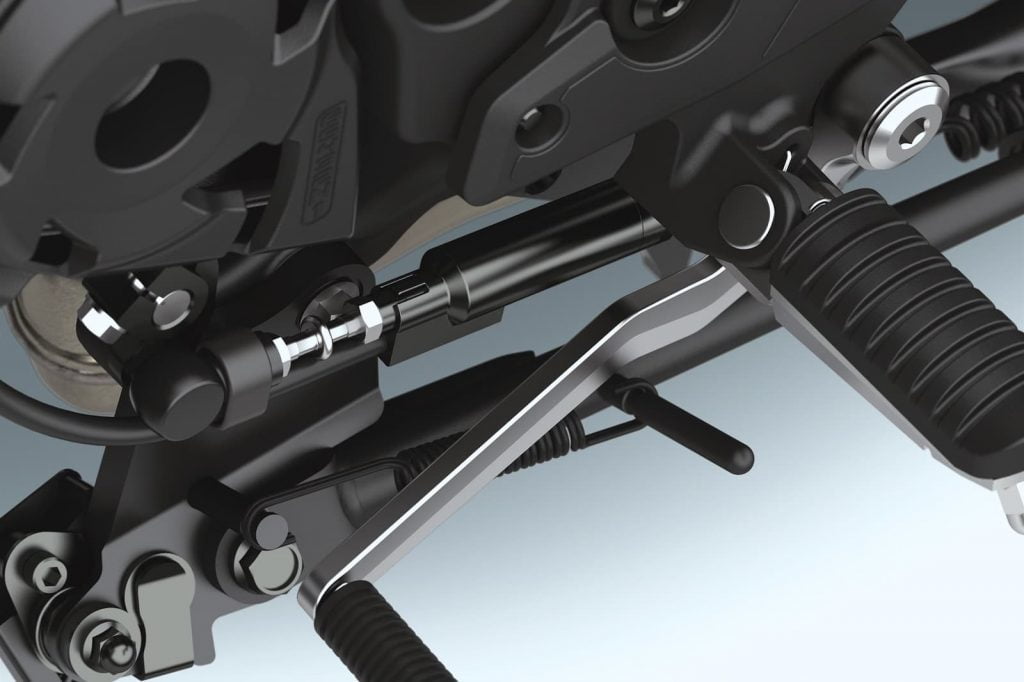
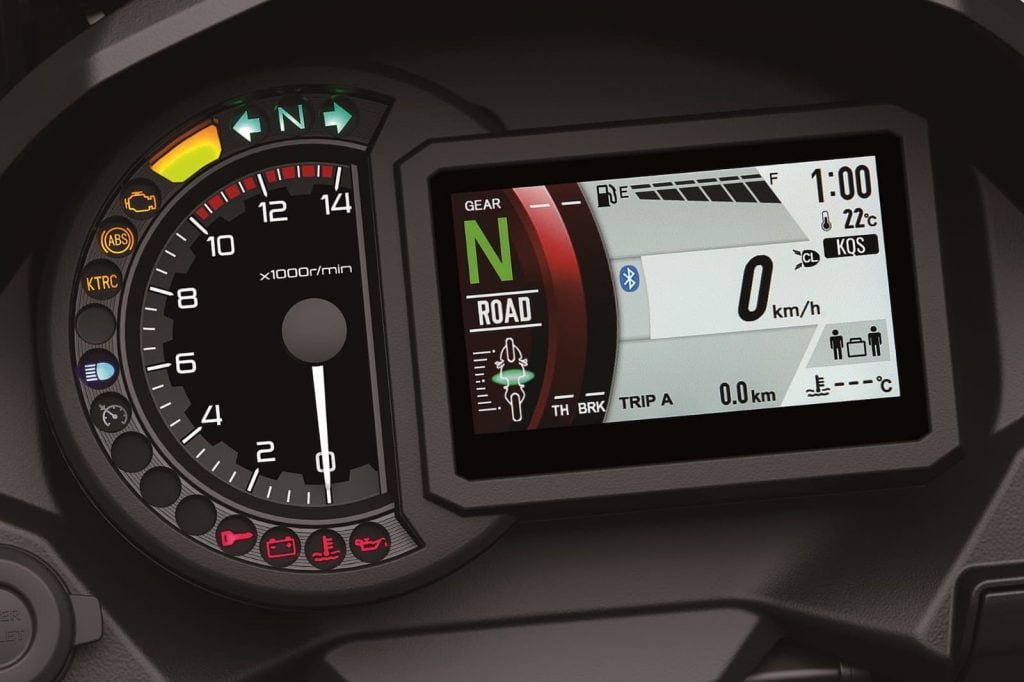
Kawasaki Versys 1000 (2019+) Manual
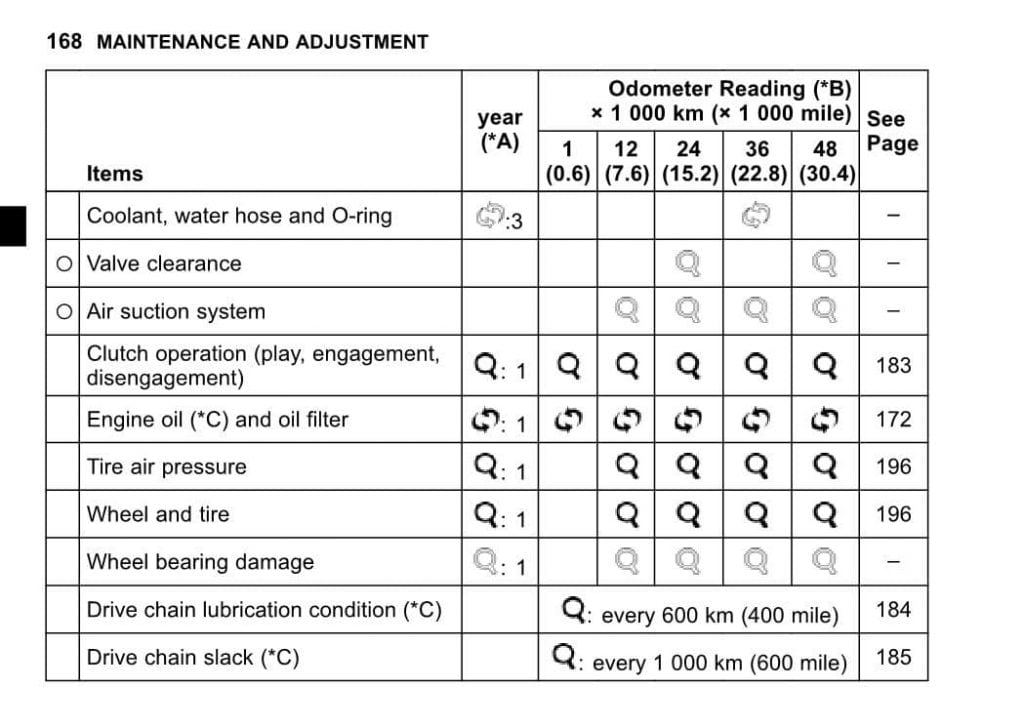
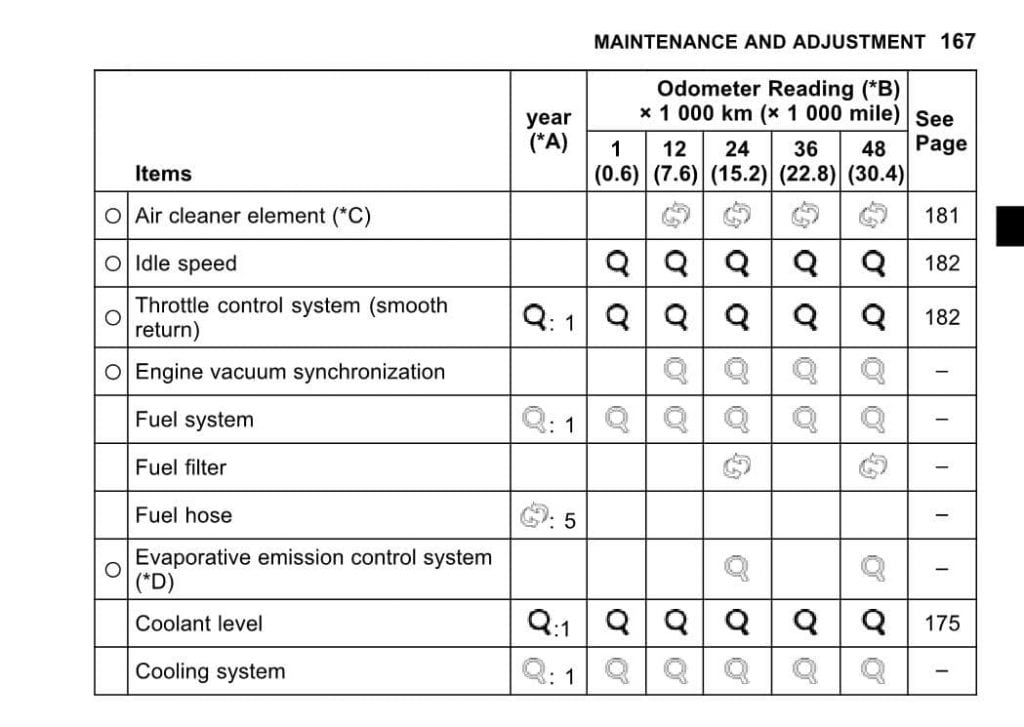
The above maintenance schedule and service intervals for the Kawasaki Versys 1000 came straight from the manual for the 2021 model. It’s equivalent to the earlier years.
You can get the manual on Kawasaki’s website here.
